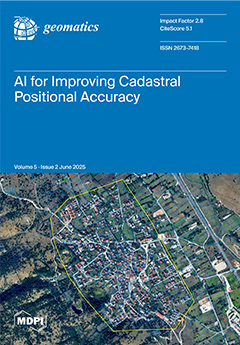Spectral indices such as NDRE (Normalized Difference Red Edge Index), CCCI (Canopy Chlorophyll Content Index), and IRECI (Inverted Red Edge Chlorophyll Index), derived from the Red Edge band of MSI/Sentinel-2A (B05, B06, B07), are critical for coffee monitoring. To align the Red Edge
[...] Read more.
Spectral indices such as NDRE (Normalized Difference Red Edge Index), CCCI (Canopy Chlorophyll Content Index), and IRECI (Inverted Red Edge Chlorophyll Index), derived from the Red Edge band of MSI/Sentinel-2A (B05, B06, B07), are critical for coffee monitoring. To align the Red Edge band (20 m resolution) with the NIR band (10 m resolution), the nearest neighbor, bilinear, cubic and Lanczos resampling methods were used, available in the Terra package in the R software(4.4.0). This study evaluates these methods using two original B05 images from 24 November 2023, and 21 September 2023, covering the “Ouro Verde” (15 ha) and “Canto do Rio” (45 ha) farms in Bahia, Brazil. A total of 500 random points were analyzed using PSF, linear models, and cross-validation with R
2, MAE, and RMSE. PSF analysis confirmed data integrity, and the cubic method demonstrated the best performance (R
2 = 0.996, MAE = 0.008 and RMSE = 0.012 in the “Ouro Verde” Farm and R
2 = 0.995, MAE = 0.007 and RMSE = 0.011 in the “Canto do Rio” Farm). The results highlight the importance of selecting appropriate resampling methods for precise remote sensing in coffee cultivation, ensuring accurate digital processing aligned with study objectives.
Full article





